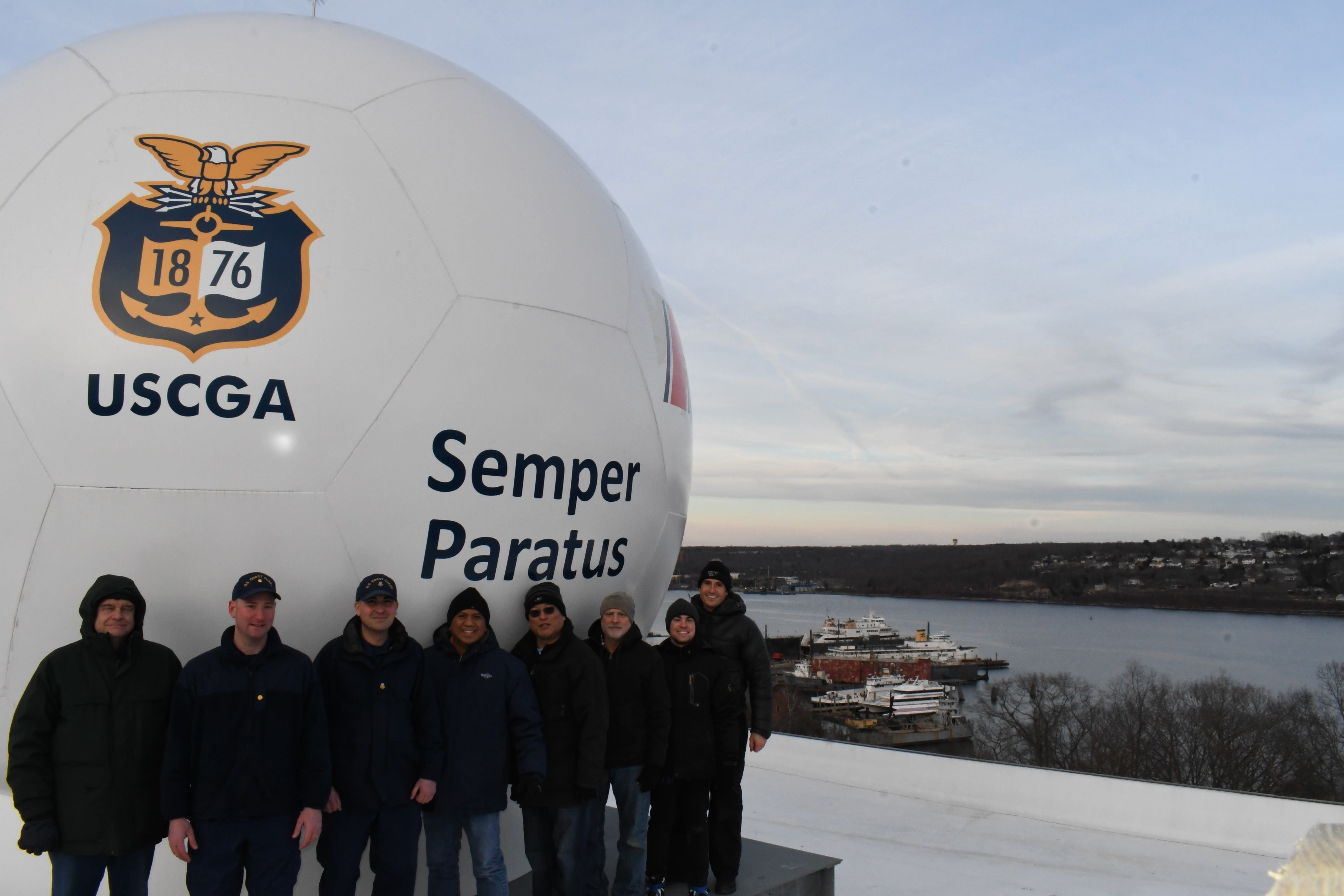The Harsh Reality of US Coast Guard Migrant Policy
by John Konrad (gCaptain) When merchant and cruise ships rescue migrants at sea, they offer more than just a lifeline from the perilous waters; they provide critical sustenance and care....


Members of the antenna construction team pose for a photo outside the radome atop of Smith Hall at the Coast Guard Academy, Jan. 1, 2019.
by Grant Wyman (USCG) There is a new landmark at the Coast Guard Academy and it is helping to launch the Coast Guard into an era of space operations.
The satellite communications ground station on the roof of Smith Hall was built by the Coast Guard Research and Development Center to support the Department of Homeland Security Science and Technology Polar Scout project, which successfully launched two CubeSats in December 2018, and will soon support a broad range of educational opportunities for cadets.
The Mobile CubeSat Command and Control network includes additional sites which allows for frequent contact opportunities with the two Polar Scout CubeSats, named Kodiak and Yukon, as they pass overhead in Low Earth Polar Orbit.
The most visible element of the Academy’s Mobile CubeSat Command and Control network site is the 18-foot diameter fiberglass geodesic dome known as a radome placed on the roof of Smith Hall, which is made even more prominent by the large “USCGA” and “CGRDC” decals supplied by the Coast Guard Academy Alumni Association.
However, it is the equipment inside the radome that is necessary to establishing satellite communications. The main feature inside the radome is a 3-meter diameter parabolic dish antenna that is controllable in azimuth, moving side to side, and elevation, moving up and down, so that it can automatically point towards the satellite during a pass. The radome also houses the rest of the communications components such as software defined radio, amplifiers and filters that ensure that the proper signals are transmitted to and received from the satellite.
While, initially, use of the Academy ground station will be dedicated to the Polar Scout project, it was placed at the Academy so that it can help form the basis for a multidisciplinary cadet academic space program.
The Mobile CubeSat Command and Control network and availability of a ground station at the Academy provides a world-class capability in the rapidly developing arena of small satellites for academic, research, government and commercial applications.
Cmdr. Royce James, a professor in the Academy physics section, has been a champion of the emerging Academy space program.
“Small satellite platforms have significantly reduced space-based programming costs and technological barriers,” said James.
“Additionally, space has emerged as a critical new realm for the service. Partnerships like Polar Scout and our Academy ThinSat programs enable important expansions of the Coast Guard’s environmental data and monitoring capabilities. Successful implementation of satellite technology through our ground stations and other assets require us to develop cadet course work and our expertise in electromagnetic energy and remote sensing capabilities.”
Although the Coast Guard may be new to space operations, access to advanced systems like the Academy ground station and more importantly the interest sparked among cadets, points to a bright future ahead.
Thsi article was written by Written by Lt. Cmdr. Grant Wyman, USCG for USCG Compass.
Join the gCaptain Club for curated content, insider opinions, and vibrant community discussions.


Join the 105,896 members that receive our newsletter.
Have a news tip? Let us know.
Access exclusive insights, engage in vibrant discussions, and gain perspectives from our CEO.
Sign Up




Maritime and offshore news trusted by our 105,896 members delivered daily straight to your inbox.



Essential news coupled with the finest maritime content sourced from across the globe.
Sign Up